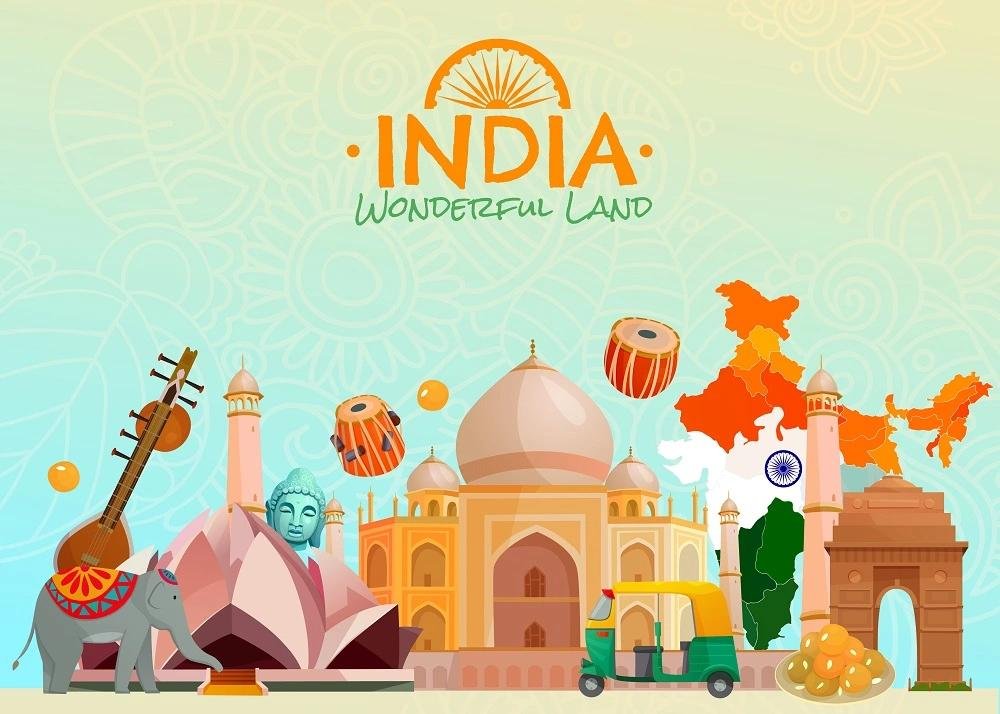Unity in Diversity: India’s Rich Cultural Mosaic

India, a land of myriad cultures, languages, and traditions, is often celebrated for its remarkable ability to blend diverse influences into a harmonious whole. This unity in diversity is not merely a characteristic of the nation but a reflection of its deep-rooted values and historical evolution. From its ancient traditions to its modern-day practices, India stands as a living example of how varied cultural elements can coexist and flourish together.
A Tapestry of Traditions
India's cultural landscape is an intricate tapestry woven from the threads of countless traditions. Each state, each region, and even each community adds its unique pattern to this rich fabric. The north of India, with its lively festivals such as Diwali and Holi, offers a vibrant display of colorful rituals and celebrations. These festivals are marked by elaborate preparations, festive foods, and traditional dances that bring communities together.
In contrast, the south of India is known for its classical dance forms, such as Bharatanatyam and Kathakali, and its festivals like Pongal and Onam. These traditions emphasize spirituality, agricultural prosperity, and artistic expression. The contrast between the two regions highlights the diversity within the country, yet the underlying theme of unity remains constant.
Linguistic Diversity
One of India’s most striking features is its linguistic diversity. With 22 officially recognized languages and hundreds of dialects, India is a veritable linguistic mosaic. Despite this, there is a shared understanding and respect for each language's role in preserving cultural heritage. Hindi and English serve as the primary languages for official and national communication, while regional languages like Tamil, Bengali, and Punjabi thrive in their respective areas, each contributing to the nation's cultural richness.
Culinary Diversity
Indian cuisine is another reflection of the country's diversity. From the spicy curries of the north to the coconut-infused dishes of the south, each region offers a distinct culinary experience. The variety in ingredients, preparation methods, and flavors is a testament to the region’s historical influences and local preferences. Yet, despite these differences, there is a shared love for food that brings people together, whether through family meals or community feasts.
Festivals and Celebrations
Festivals are a cornerstone of India’s cultural unity. They are not only times for joyous celebrations but also moments when diverse communities come together. Festivals like Eid, Christmas, and Vaisakhi are celebrated with great enthusiasm across different regions. The spirit of inclusivity and respect for all traditions is evident in how these festivals are observed, with interfaith celebrations and community events highlighting the country’s collective spirit.
The Role of Arts and Literature
The arts and literature of India also reflect its cultural mosaic. Indian classical music, with its two major traditions of Hindustani and Carnatic, showcases the depth and diversity of musical expression. Bollywood and regional cinema contribute to a shared cultural experience that transcends regional boundaries. Literature, from ancient epics like the Mahabharata and Ramayana to contemporary works in various languages, continues to explore and celebrate the multifaceted nature of Indian society.
Unity in Diversity

The concept of unity in diversity is ingrained in India’s ethos. It is reflected in the nation's ability to embrace and celebrate its differences while maintaining a cohesive identity. This unity is not about uniformity but about recognizing and respecting the unique contributions of each culture to the collective identity of India.
In conclusion, India’s rich cultural mosaic is a testament to its ability to harmonize diverse traditions, languages, and practices into a unified whole. The country’s celebration of its diversity is a powerful reminder of how different elements can come together to create something greater than the sum of its parts. As India continues to evolve, its commitment to unity in diversity remains a cornerstone of its cultural identity, enriching the lives of its people and inspiring the world.
